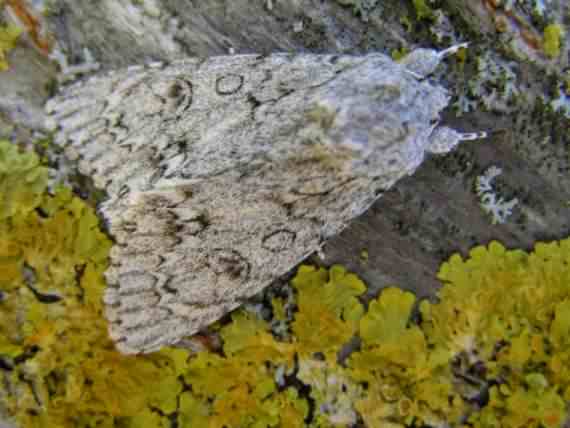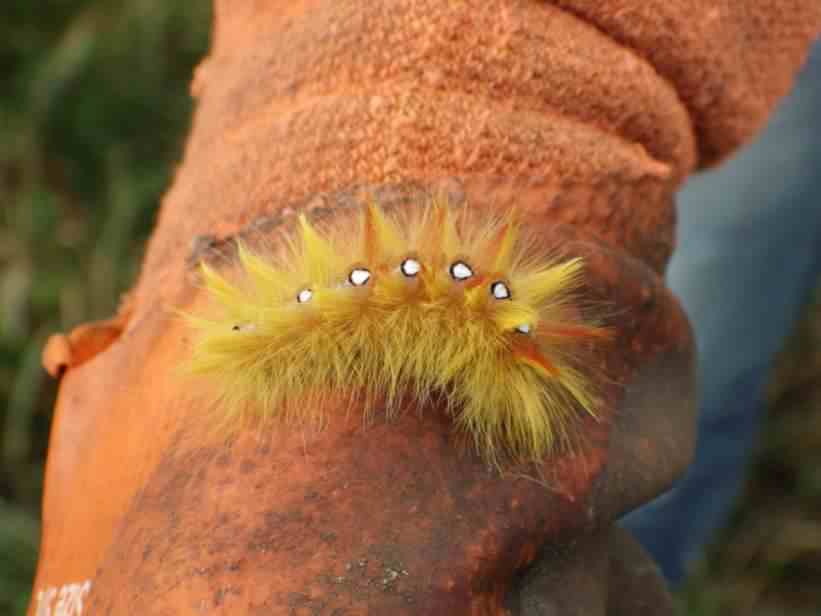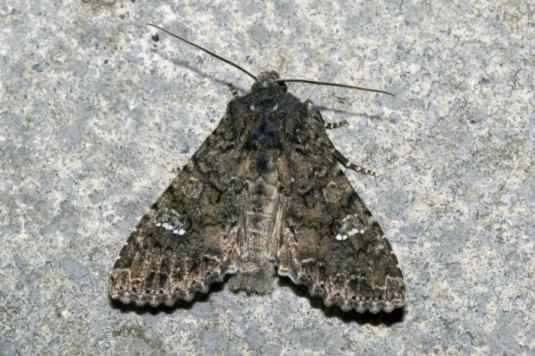

Photo ©2008 Fvlamoen

Photo ©2020–
Click any photo for a larger image

The similar Cabbage moth
Photo ©2007 Olaf Leillinger
 |
 Photo ©2008 Fvlamoen |
 Photo ©2020– Click any photo for a larger image |
 The similar Cabbage moth Photo ©2007 Olaf Leillinger |
Sycamore moth - Acronicta aceris
Family - Noctuidae
Sub–family - Acronictinae (Dagger moths)
The Sycamore moth is another typical indistinct light grey moth but with a colourful surprise, its caterpillar has a bright orange and a long hairy tufted yellow punk hairdo ! making it a very distinctive caterpillar that is not to be missed. There is a distinctive row of dorsal markings comprising a dorsal series of black edged, snow white diamond like spots, occasionally linked by a white line, its head is black. These spots appear to stand out quite markedly from the orange and yellow background.
Found in the south eastern UK in woodland, parkland and scrub areas, through Europe and the Middle East to West Asia, and seen in flight during June and July. The sub–family common name of "Dagger moths" refers to black dagger–shaped markings on the forewings that are common in the family. The Poplar Grey moth is another "Dagger" moth species found in Brickfields Park.
The forewings of the adult moth are a whitish pale to dark grey with various indistinct markings, thin black circles, lines and swirls. The wingspan is 38–45mm (1.5–1.8in). Superficially similar to the Cabbage moth - Mamestra brassicae (see the lower right photo), which has a less distinct white patch and an overall array of lighter marbled markings, especially on the wing trailing edges (termen). The hindwing are white in the male but greyish in the female, sometimes with dark streaks at the margin.
Eggs are laid on its larval food plant of Maples, Horse Chestnut, Broad Leaved Lime and English Oak, all species found in Brickfields Park. Usually such bright colours might indicate being a poisonous species to its predators, however the Sycamore moth not poisonous, but may cause us skin irritation if handled too much. The fully grown caterpillars which can reach 45mm (1.8in) in length, overwinter in a cocoon constructed amongst bark and leaf litter. They are commonly seen during late summer and early autumn wandering in search of somewhere to pupate.
The sub–family common name of "Dagger moths" refers to black dagger–shaped markings on the forewings that are common in the family. The Poplar Grey and Grey Dagger moths are other "Dagger" species found in Brickfields Park. Other common Dagger species include the Dark Dagger, The Miller, Alder Moth and The Knot Grass.
The Sycamore moth is part of the Noctuoidea superfamily which now comprises just over 11,000 species after reorganisation of the some 20,000 species that were originally in the group. Noctuidae are commonly known as Owlet moths, there are however only five Owlet moth species grouped in the Mesogona genus.
Agassiz #73.039, Bradley & Fletcher #2279
Site design ©1999– Brickfields Country Park - Privacy -